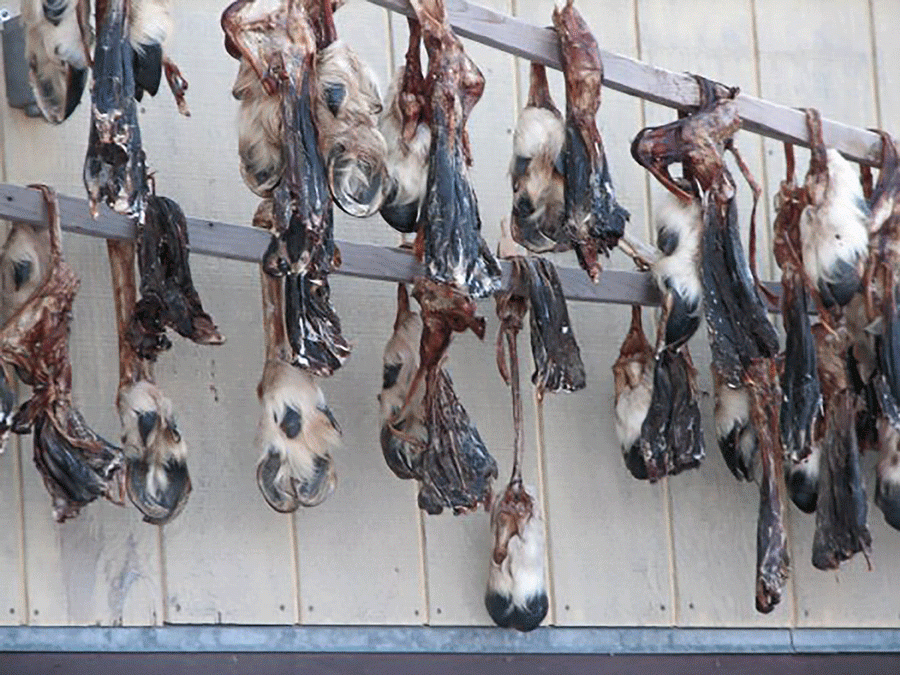Health
There are significant health gaps between Inuit and non-Inuit in Canada. Inuit have much lower life expectancies than other people living in Canada, comparatively high rates of infant mortality, the highest suicide rates of any group in Canada and disproportionately higher rates of infectious diseases. This health gap in many respects is a symptom of poor socio-economic conditions in Inuit communities, characterized by high poverty rates, low education levels, limited employment opportunities and inadequate housing conditions.
The World Health Organization defines the social determinants of health as the conditions in which people are born, grow, live, work and age. These circumstances are shaped by the distribution of money, power and resources at global, national and local levels. These social determinants of health are mostly responsible for health inequities — the unfair and avoidable differences in health status seen within and between countries.

Based on a broad review of the literature focusing on Inuit health and on recent consultations with representatives from Inuit organizations, agencies and governments, the key social determinants have been revised to the following 11 factors:
Quality of early childhood development, culture and language, livelihoods, income distribution, housing, personal safety and security, education, food security, availability of health services, mental wellness, the environment
Data on Inuit Health Status
Many health indicators currently in use at the national level in Canada reflect the significant challenges impacting the health of Inuit in Canada. Life expectancy in Inuit Nunangat is well below the Canadian average. For residents of Inuit Nunangat (including non-Inuit), life expectancy is 70.8 years, compared with 80.6 years for all Canadians.
Suicide is a demonstrative sign of socio-economic distress and a strong manifestation of social exclusion, especially among Inuit males between the ages of 15 and 24, where suicide is most prevalent. Children and teenagers in Inuit Nunangat are more than 30 times as likely to die from suicide compared to their counterparts in the rest of Canada. Furthermore, half of all deaths of young people in Inuit Nunangat are suicides, compared with approximately 10 per cent in the rest of Canada.

Many health problems are attributed to crowded and poor quality housing, unemployment, marginal access to health services, food insecurity and behavioural and environmental factors. In Nunavut, a child health survey found that some 31 per cent of Inuit infants were hospitalized for bronchiolitis during their first year of life, and 42 per cent of Inuit children had sought medical attention during the previous year for a respiratory illness. These high rates of bronchiolitis and other respiratory tract infections have been attributed to household crowding, exposure to tobacco smoke and defects in immunity. As well, nearly 60 per cent of infants aged nine to 14 months in Nunavik are anemic (primarily due to insufficient nutrition).
The tuberculosis rate for Inuit in Canada is significantly higher than that for the Canadian-born non-Indigenous population — 262/100,000 compared to 0.7/100,000. For many chronic conditions such as diabetes, high blood pressure and heart disease, rates for Inuit are similar to those for the total Canadian population. Given the changes in diet and lifestyle, ongoing monitoring and increasing awareness of the need for more effective approaches to prevention, control and care for Inuit is essential.
Many health problems are attributed to crowded and poor quality housing, unemployment, marginal access to health services, food insecurity and behavioural and environmental factors.

Current State of Research
An increasing amount of literature can be found on topics such as food security, access to appropriate health care, housing, acculturation, literacy and health, mental wellness, community well-being, subsistence harvesting and suicide. This literature and the data collected within the studies it describes increasingly allow for a more holistic outlook on the overall health status of Inuit beyond the commonly referenced indicators that focus on health deficits such as infant mortality or prevalence of infectious diseases.

Order now
from Amazon.ca or Chapters.Indigo.ca or contact your favourite bookseller or educational wholesaler




